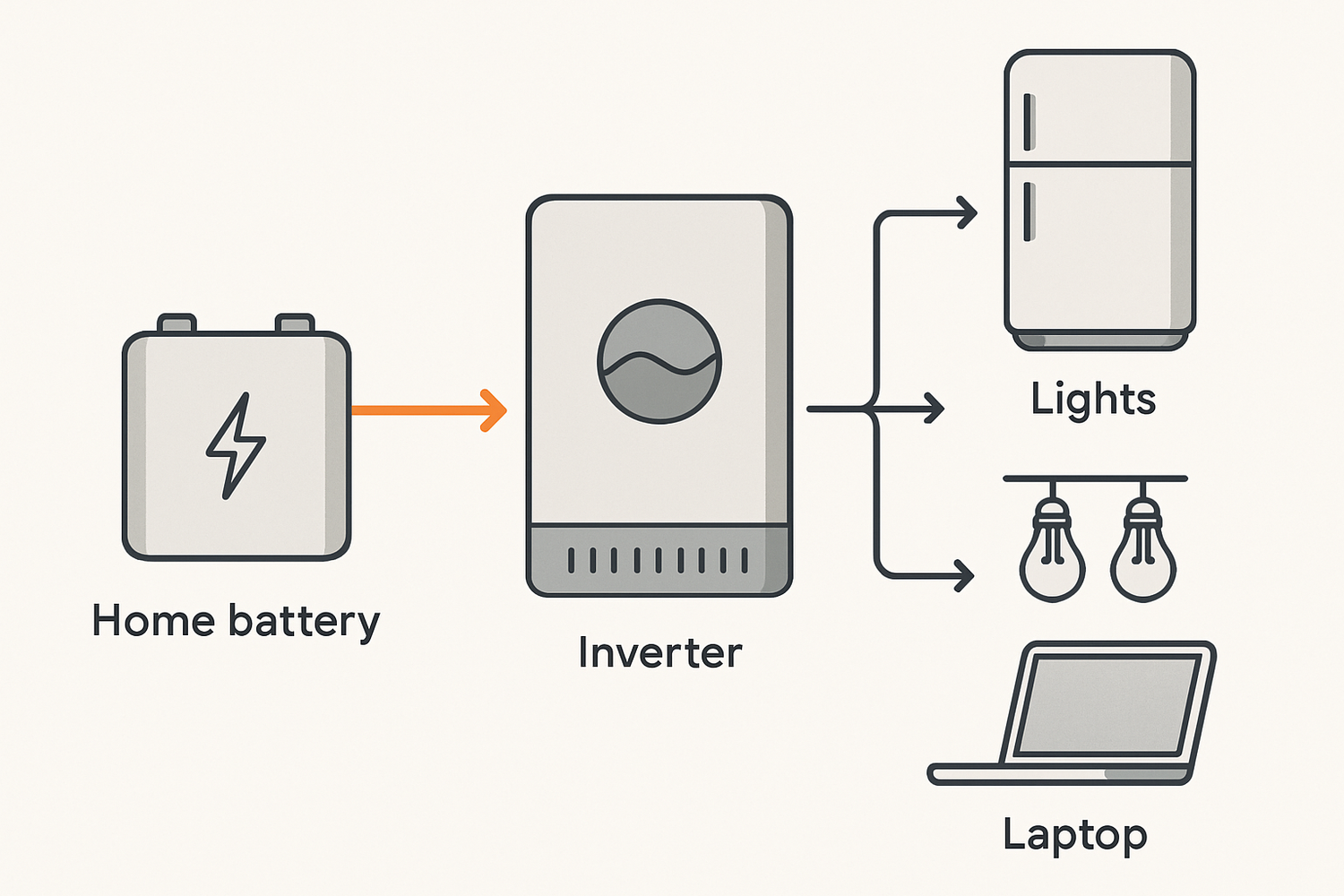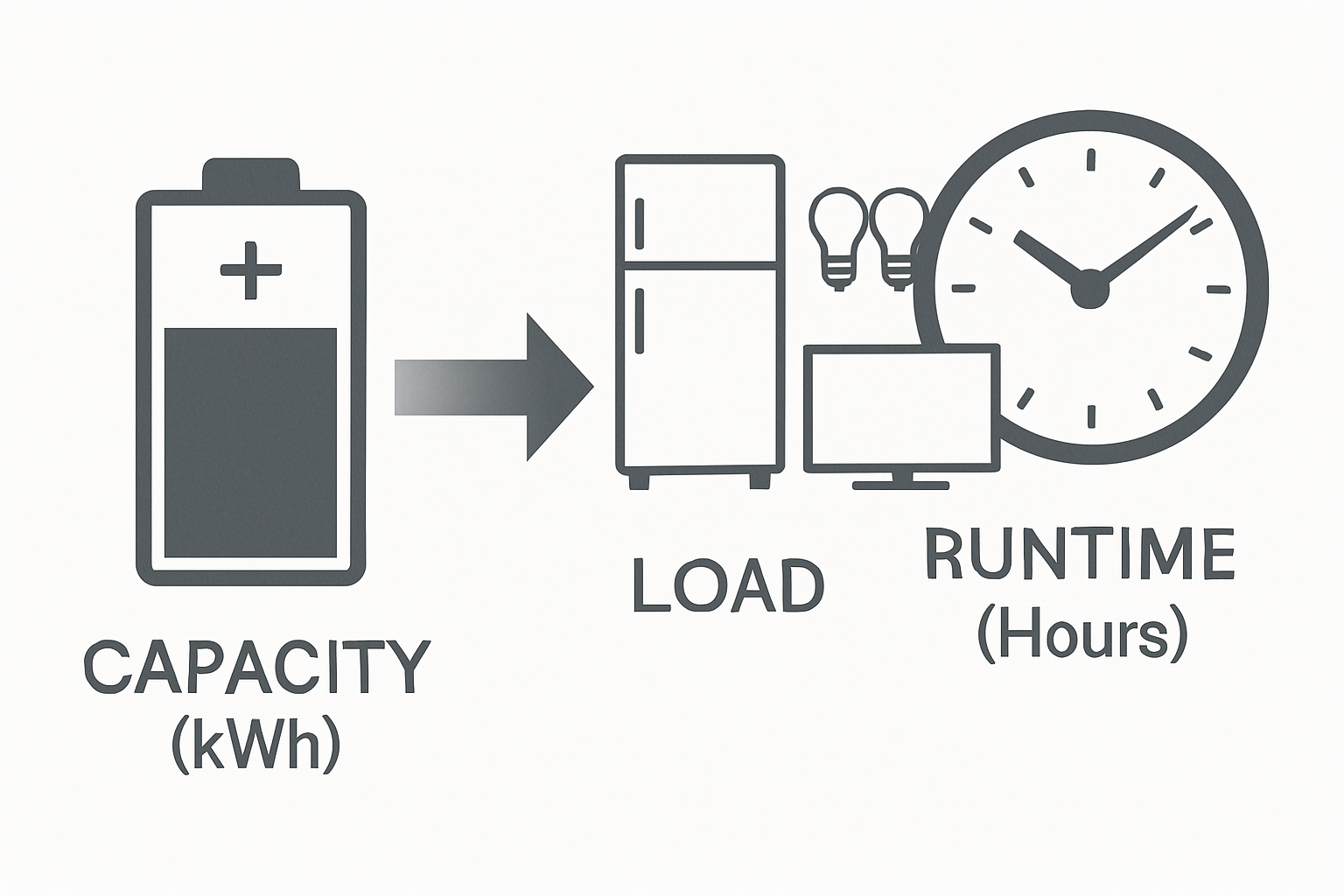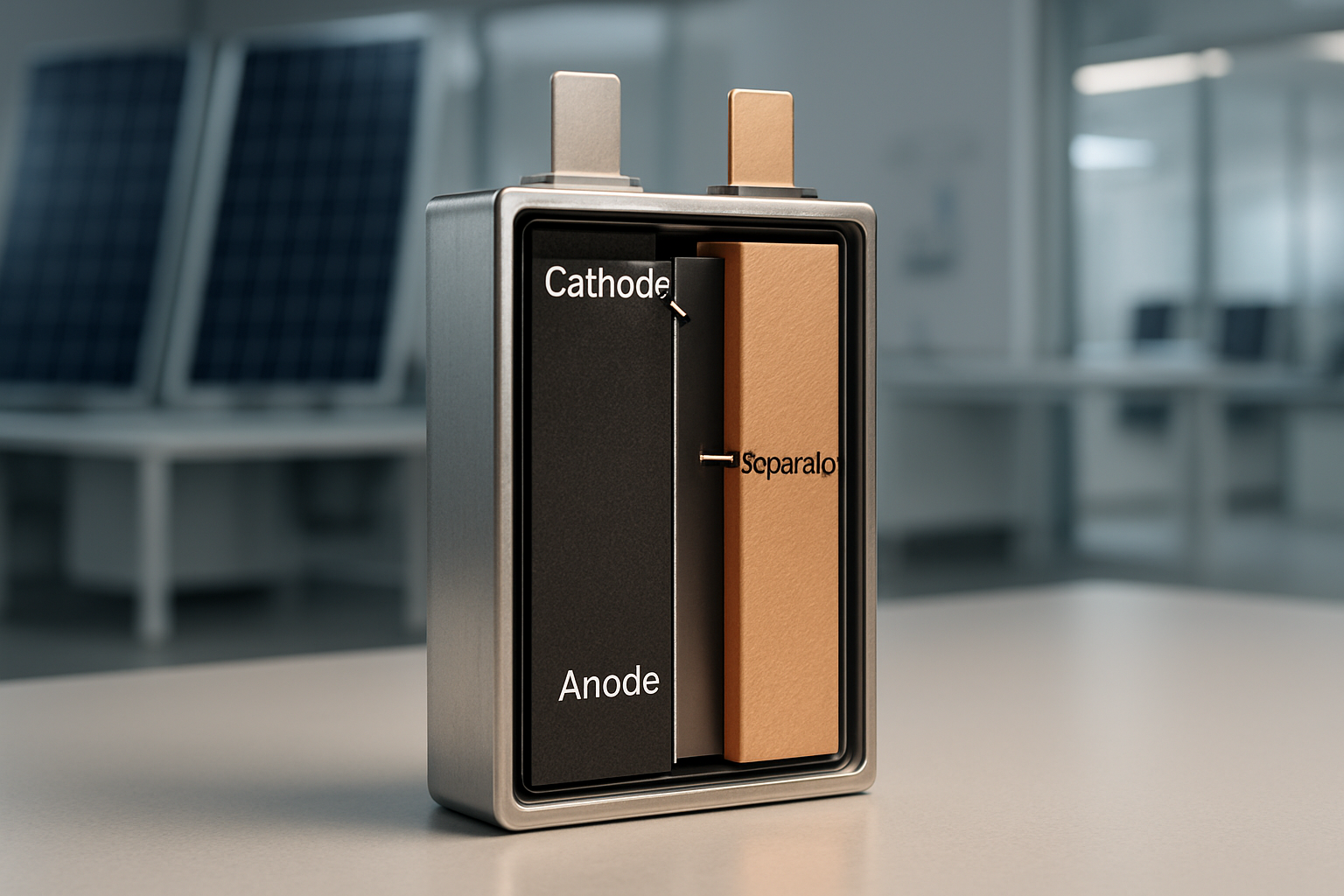Understanding the runtime of your home energy storage system is crucial for effective energy management, especially during a power outage. It gives you a clear picture of how long you can power your essential devices. This guide provides a straightforward method to calculate your system’s runtime, empowering you to make informed decisions and achieve greater energy independence.
Grasping the Core Concepts
Before you can calculate the runtime, you need to understand the fundamental terms that define your system's capabilities and your home's energy usage. These concepts are the building blocks for an accurate estimation.
Battery Capacity (kWh): Your Energy Reservoir
Think of battery capacity as the amount of energy your system can store. It's measured in kilowatt-hours (kWh). A higher kWh rating means your battery holds more energy, just like a larger fuel tank holds more gasoline. This value is the total potential energy you have available for use. For instance, a 10 kWh battery can deliver 1 kilowatt of power continuously for 10 hours.
Appliance Power Consumption (Watts): The Rate of Energy Use
Every appliance in your home consumes energy at a certain rate, measured in watts (W). You can usually find this information on the appliance's label or in its user manual. To calculate runtime, you need to know the total wattage of all the devices you plan to operate simultaneously. High-power appliances like air conditioners will drain your battery much faster than low-power devices like LED lights.
The Fundamental Runtime Formula
At its simplest, the calculation for runtime is a direct relationship between stored energy and energy consumption. The basic formula is: Runtime (in hours) = Battery Capacity (in kWh) / Your Total Load (in kW). This initial calculation gives you a baseline estimate, which we will refine with more real-world factors.
A Step-by-Step Calculation for Accurate Runtime
Now, let's walk through the process of calculating a precise runtime for your home energy storage system. Following these steps will help you get a realistic expectation of your system's performance.
Step 1: Determine Your Total Load
First, list all the essential appliances you want to power. This might include your refrigerator, lights, internet router, and medical devices. Sum the wattage of these items to find your total concurrent load. For example, if you run a 150W refrigerator, 50W of lighting, and a 20W router, your total load is 220W.
| Appliance | Average Power Consumption (Watts) |
|---|---|
| Refrigerator | 150 - 200 W |
| LED Lights (per bulb) | 5 - 15 W |
| Wi-Fi Router | 10 - 20 W |
| Laptop Charger | 45 - 65 W |
| Television (LED) | 50 - 150 W |
| Sump Pump | 750 - 1500 W |
Step 2: Convert Total Load to Kilowatts (kW)
Since battery capacity is measured in kilowatt-hours, you must convert your total load from watts to kilowatts. The conversion is simple: divide the total wattage by 1,000. Using the previous example, 220W becomes 0.22 kW.
Step 3: Apply the Basic Formula
With your total load in kW, you can perform an initial calculation. If you have a 10 kWh battery and your load is 0.22 kW, the formula is: 10 kWh / 0.22 kW = 45.45 hours. This is a good starting point, but it doesn't account for system inefficiencies.
Refining Your Calculation: Factors That Impact Real-World Runtime
Several factors can reduce the actual runtime you get from your system. Incorporating them into your calculation provides a much more accurate result. As noted in a study on resilient solar systems by Sustainable CUNY, integrating technologies like battery storage requires addressing system design and technology integration for proper deployment. According to the EERE Success Story—Empire State Strikes Back, connecting solar systems to battery backup is critical for providing power during outages.
Depth of Discharge (DoD)
Depth of Discharge (DoD) is the percentage of the battery's capacity that has been used. To extend a battery's lifespan, it's often recommended not to drain it completely. However, modern LiFePO4 (Lithium Iron Phosphate) batteries can safely handle a high DoD, often up to 90% or even 100%, without significant degradation. Always check your battery's specifications for the recommended DoD.
Inverter Efficiency
Your home energy storage system uses an inverter to convert the battery's direct current (DC) power into alternating current (AC) power that your appliances can use. This conversion process isn't perfect; some energy is lost as heat. Most modern inverters have an efficiency of 90-95%. This means you lose 5-10% of your stored energy during conversion. The International Energy Agency's report, Next Generation Wind and Solar Power, highlights that installing battery storage systems with solar PV can effectively increase energy self-consumption by shifting produced energy, making system efficiency a key factor.
The Comprehensive Runtime Formula
To get the most accurate estimate, you should use a formula that includes both DoD and inverter efficiency. The comprehensive formula is: Runtime = (Battery Capacity (kWh) × DoD × Inverter Efficiency) / Total Load (kW). For a deeper analysis of the various metrics that shape system performance, you can review this ultimate reference on solar storage performance.
A Practical Example: Sizing for a Power Outage
Let's apply the comprehensive formula to a real-world scenario. Imagine you have a 10 kWh LiFePO4 battery system and want to power essential devices during an outage.
- Battery Capacity: 10 kWh
- Recommended DoD: 90% (0.90)
- Inverter Efficiency: 95% (0.95)
- Essential Load: Refrigerator (150W) + Lights (50W) + Router (20W) + Phone Chargers (20W) = 240W or 0.24 kW
Now, we apply the formula:
Runtime = (10 kWh × 0.90 × 0.95) / 0.24 kW
Runtime = 8.55 kWh / 0.24 kW
Runtime = 35.6 hours
This calculation shows that your system could power these essential devices for approximately 35.6 hours, giving you a reliable backup power source for over a day. According to the International Renewable Energy Agency's Electricity Storage Valuation Framework, understanding these performance characteristics is essential for valuing the services that storage provides, including backup power.
Achieving True Energy Confidence
Calculating the runtime of your home energy storage system moves you from estimation to certainty. By considering your battery's capacity, your household's load, and key efficiency factors like DoD and inverter performance, you gain a clear and practical understanding of your energy reserves. This knowledge is fundamental to achieving reliable backup power and taking a significant step toward energy independence.
Frequently Asked Questions
What is the difference between kW and kWh?
Kilowatt (kW) and kilowatt-hour (kWh) are often confused. A kilowatt is a unit of power, representing the rate at which energy is used. Think of it as speed. A kilowatt-hour is a unit of energy, representing the total amount of energy consumed over time. Think of it as distance. Your battery capacity is measured in kWh (the total energy stored), while your appliance's consumption is measured in kW (the power it draws).
Why is a LiFePO4 battery a good choice for home energy storage?
LiFePO4 batteries are an excellent choice for home energy storage due to their safety, long cycle life, and high Depth of Discharge (DoD). They are thermally stable, reducing the risk of overheating. They can also endure thousands of charge-discharge cycles, offering a long service life. Their ability to be deeply discharged without significant harm means you can use more of their stored energy.
Can I increase my system's runtime?
Yes, you can increase your system's runtime in two primary ways. The first is to reduce your energy consumption by turning off non-essential appliances during an outage. The second is to expand your system's capacity by adding more batteries. A scalable energy storage solution allows you to increase your energy reserves as your needs grow, providing greater flexibility and longer runtime.





Leave a comment
All comments are moderated before being published.
This site is protected by hCaptcha and the hCaptcha Privacy Policy and Terms of Service apply.